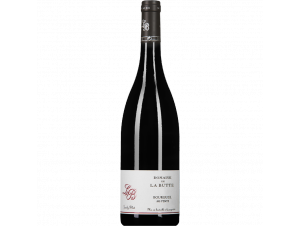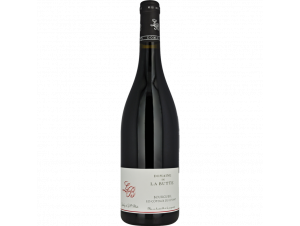You have no items in your shopping cart.
Wine Bourgueil
-
Top Selling
-
Top Selling
-
Top Selling
- -18%
A history that goes back to the Bourgueil Abbey
We owe the creation of the vineyard of Bourgueil to the Bourgueil Abbey founded in 990. In 1189, Abbot Baudry highlighted the qualities of its wine. The Bourgueil vineyard gradually spread outside the enclosure, to establish itself on the gently sloping hillsides and terraces of the Loire banks.
Between the 11th and 12th centuries the Cabernet Franc grape variety was certainly introduced there by river. The implantation of this grape variety locally called "Le Breton" is due to the political alliance between Anjou and Aquitaine. In the 17th century, the marketing of these wines increased thanks to the Dutch fashion designers who wished to import them into their country and their colonies.
At the end of the 19th century the French vineyard was hit by the phylloxera crisis. The soils of alluvial deposits with a sandy tendency of the terraces will resist for a long time to the invasion of the aphid responsible for this disease. The reconstruction of the vineyard with the Cabernet Franc grape variety will be rapid.
The Bourgueil AOC was recognised in 1937 by the INAO. The wine house created in 1991 is installed in the former house of Jean Carmet (actor and screenwriter born in Bourgueil). The second wine house of the AOC opened its doors in 2018, at the foot of the Château de Langeais. The objective is identical: to promote the wines of the Bourgueil AOC. The professionals and promoters of the appellation meet within the brotherhood of the Dive bouteille.
Two terroirs in Bourgueil for a single grape variety
The Bourgueil AOC covers 1400 ha between Saumur and Tours, along the Loire. The production of this appellation is allowed on 8 communes which are Benais, Bourgueil, Chapelle-sur-Loire, Chouzé-sur-Loire, Ingrandes-sur-Loire, Restigné, Saint-Nicolas-de-Bourgueil and Saint-Patrice. The AOC is bounded to the north by the forest of and to the south by the Loire.
The remaining two thirds of the vineyard are implanted on terraces and croups which are called "montilles". Located on the plain, their soil is sandy-gravelly more or less stony from the alluvium deposited by the Loire. The soils warm up quickly and are well draining.
The protection from the north winds thanks to the Gâtine forest, the presence of the Loire and the Changeon which act as a thermal buffer and the composition of the soils give characteristics to this vineyard which allows the Cabernet Franc, a late grape variety, to reach a beautiful maturity during the month of September. The appellation's specifications allow the winemaker to make a blend of Cabernet Franc and Cabernet Sauvignon.
The warm, temperate climate of the area results in a 1°C increase in annual minimum temperatures in the area compared to the Touraine vineyard. The average annual rainfall is 676 mm/year. Rainfall is spread throughout the year including the summer.
One grape variety in Bourgueil for two types of wine
The grapes from the hillside vineyards will give rich, silky, ageing red wines. The colour is ruby red. The nose develops fruity aromas of cherry, strawberry, blackcurrant and may reveal notes of raspberry. It becomes more complex with notes of cocoa, smoke and spices. We can sometimes detect a hint of vegetable aroma such as green pepper. With age the nose reveals notes of undergrowth and animal.
The palate is silky, structured and tannic. These are wines for ageing or even great ageing if the climatic conditions allow it.
The wines whose terroirs of origin are the terraces or "montilles" are supple, fruity, light, that is to say wines of pleasure to be consumed in their youth. The colour is ruby-garnet. The nose has aromas of red and black fruits. The mouth is supple, elegant and tannins are melted.
Depending on the winemaker's desires, a blend of different terroirs is possible. Although renowned for its reds, the Bourgueil AOC also produces 4% rosé. Very often resulting from bleeding, the rosés have a deep pink colour. The nose is aromatic with aromas of red fruits, white fruits and citrus fruits with sometimes a peppery note. The mouth is fruity, supple and fresh.
What to pair with Bourgueil wines
Bourgueil wines are best served with powerful dishes such as red meat or game. They also go well with a platter of strong, mature cheeses.
The wines of pleasure will go well with a platter of charcuterie, a barbecue or white meat. They can also be enjoyed with a platter of regional cheeses.
Rosé wines are best enjoyed as aperitifs, with summer salads or fruity desserts such as red fruit salad or a red fruit tart.
Exceptional vintages in Bourgueil
The late ripening of Cabernet Franc as well as the characteristics of the Bourgueil terroirs allow the production of great wines during hot years. The following are listed as great vintages for the Bourgueil AOC: 1929, 1945, 1947, 1959, 1989, 2003, 2005, 2009, 2014, 2015, 2016, 2017 and 2018.
The must-see domains of Bourgueil
Domaine de la butte
The Domaine de la Butte was taken over in 2002 by Jacky Blot. Renowned for the Domaine de la Taille aux Loups installed in Montlouis-sur-Loire, he applies the same working methods there, respectful of the environment. An adept of the differentiation of terroirs, he vinifies his vintages according to their places of origin, which gives rise to terroir and unique wines. He is notably the author of the famous Mi-pente cuvée.Domaine Yannick Amirault
The Domaine Yannick Amirault is a family estate established in 1977 in the commune of Bourgueil. A forerunner in the abandonment of the use of synthetic products, the estate's certification in organic farming dates from 2009. The wines are pure and of pleasure. Two-thirds of the estate's vintages come from the Bourgueil AOC and the remaining third from the Saint-Nicolas-De-Bourgueil AOC.Blanc Fumé de Pouilly
Chaume 1er cru des Coteaux-du-Layon
Coteaux-de-l'Aubance
Coteaux-du-Loir
Coteaux-du-Vendômois
Côtes-d'Auvergne-Châteaugay
Côtes-d'Auvergne-Corent
Cour-Cheverny
Fiefs-Vendéens-Mareuils
Gros-plant du Pays nantais
Haut-Poitou
Orléans
Pouilly-sur-Loire
Saumur Puy-Notre-Dame
Touraine-Azay-le-Rideau
Touraine-Mesland
Vin de Pays de la Vienne
Vin de Pays de Loire-Atlantique
Vin de Pays du Jardin de la France
Vin de Pays du Loir et Cher
Vin de Pays du Puy de Dôme




































 TWIL - Achat de Vin
TWIL - Achat de Vin


